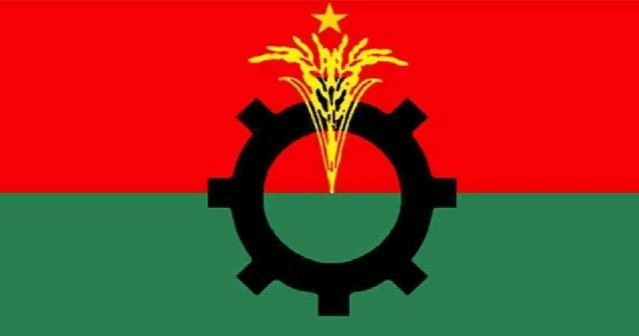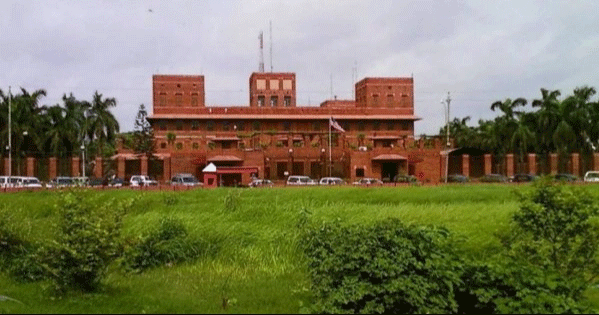8 banks failed to achieve agro loan targets
Staff Correspondent: A total of 8 banks could not achieve the target of agricultural and rural credit distribution in the last financial year 2022-23. Among them are one government and seven private banks.
The banks are – state-owned Basic Bank, private sector AB Bank Limited, First Security Islami Bank, Global Islami Bank, Madhumati Bank, National Bank, Social Islami Bank and Union Bank.
The amount of unutilized money in these banks that failed to achieve the agricultural loan target should be deposited in the Agricultural Development Fund (Bangladesh Bank Agricultural Development Common Fund-BBADCF). From which Bangladesh Bank will distribute loan for the agriculture sector at only 2 percent interest.
The latest report on agriculture and rural credit of Bangladesh Bank says that these 8 banks have failed to distribute loans, but in the financial year 2022-23, the banks have distributed agricultural loans worth Tk 32,829.89 crore. Overall, which is Tk 2,018 crore more than the target. In the last financial year, the target of agricultural loan disbursement of the bank sector was Tk 30,811 crores.
The concerned officials of the central bank said that this time too the banks have distributed agricultural loans more than the set target. Many banks have disbursed more loans than the target. Again, some banks have failed to achieve the target of disbursement of agricultural loans. The number of such banks is eight.
According to the data of the central bank report, the target of Basic Bank which failed to achieve the agricultural loan target was Tk 50 crore. But in the last financial year, the bank gave agricultural loans of Tk 48.45 crore; Which is 96.90 percent of the set target level.
Private sector AB Bank’s target was Tk 521 crore. The bank gave only Tk 176.15 crore. That is 33.81 percent of the set target.
First Security Islami Bank disbursed agricultural loans of Tk 732.08 crore against the target of Tk 957 crore. Which is 76.50 percent of the set target.
The target of the fourth generation Global Islami Bank was Tk 226 crores. But the bank distributed Tk 76.67 crore or 33.92 percent.
Madhumoti is another fourth-generation bank that failed in agricultural loans. It had set a target of giving agricultural loans of Tk 90 crores in the last financial year. But gave only Tk 7.19 crore. Which is 7.99 percent of the set target.
The National Bank had set a target of disbursing agricultural loans of Tk 760 crore but disbursed only Tk 266 crore. That is, only 35 percent of the bank’s target has been achieved.
Social Islami Bank’s target was Tk 612 crore, against which it disbursed Tk 171 crore. Which is 27.95 percent of the set target.
Union Bank’s target was Tk 392 crores. There they have been able to distribute agricultural loans worth Tk 508.6 million. According to the calculation, 12.97 percent of the target set by the bank has been able to distribute agricultural loans.
The economy of the country is directly and indirectly dependent on agriculture. The contribution of agriculture sector to the total domestic production is about 13 and a half percent. In such a reality, the central bank has been formulating policies called agricultural and rural credit every year to increase the flow of credit in the agricultural sector. Under the policy, individual targets are set for commercial banks. At the same time, the implementation of these targets is also monitored. According to tradition, Bangladesh Bank will issue the policy for determining the target of agricultural credit distribution.
According to related sources, Bangladesh Bank will announce the new agricultural policy for the current financial year on Sunday. Compared to the last financial year, the target of agricultural and rural credit distribution in the banking sector will increase by 13.60 percent this year. In the current financial year, this target will be around Tk 35,000 crore. The dependence of private banks on Micro Finance Institutions (MFIs) is being further reduced to reach farmers at low interest rates. And for this, Bangladesh Bank is going to make it mandatory to distribute at least 50 percent agricultural credit through the bank’s own network, which was 30 percent until now.
Besides, the central bank will also decide how much part of the agricultural loan should be given to which sector. The upcoming agricultural policy aims to allocate at least 60 per cent of the total agricultural credit target to crops and crops, 13 per cent to fisheries and 15 per cent to livestock and the rest to other sectors.
Considering the priority sector, the interest rate of agricultural and rural loans is comparatively lower than other loans. In the last financial year, the interest rate was fixed at a maximum of 8 percent. But not all farmers got loans at this interest rate. Because of banks’ reliance on NGOs or Microfinance Institutions (MFIs), farmers in remote and remote areas have to pay 24 to 30 percent interest to get loans. Many people are questioning whether the farmers are really benefiting from such high interest loans, or are facing more losses.
The interest rate limit on agriculture loans along with other loans for the current financial year has also been waived. From now on, interest rates on agricultural loans will also be determined on the ‘Six Months Moving Average Rate’ or smart method. In this new rule, the reference rate will be fixed based on the average rate of six months (182 days) treasury bills. Banks can add a maximum of 2 percent to determine the interest rate of agricultural loans. According to this rule, the maximum interest rate of agricultural loans will be 9.13 percent from July. In this, the interest rate will increase by more than 1 percent even if the agricultural loan is disbursed directly through the bank. However, this is much less than the interest on loans disbursed on an NGO-dependent basis.
According to research, the maximum interest rate for micro-loans for approved MFI institutions is fixed at 24 percent. As a result, farmers also have to pay 24 percent interest due to the distribution of agricultural loans through NGOs. Although this interest rate is rising from 24 to 30 percent.
President Joe Biden tests positive for COVID-19 while campaigning in Las Vegas, has ‘mild symptoms’
International Desk: President Joe Biden tested positive for COVID-19 while traveling Wedne…








